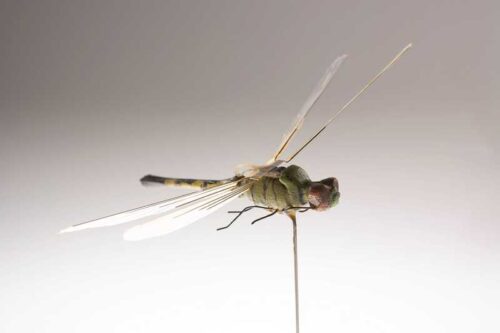A Black Hornet Nano helicopter unmanned aerial vehicle (UAV). Photo: Richard Watt/MoD.
The Black Hornet Nano is the US military’s tiniest unmanned aerial vehicle (UAV). Looking like something the flew straight out of a science fiction film, it can provide operators with unmatched situational awareness in complex and urban environments. Developed by Prox Dynamics AS of Norway, the Black Hornet Nano has been used by a growing number of governments, including the US, UK, France, Germany and Australia, for missions ranging from counterterrorism to humanitarian aid. The drone is praised for its stealth, maneuverability, and ease of use, as well as its potential to save lives and reduce collateral damage.
Founded in 2007, Prox Dynamics AS of Norway develops and manufactures micro-UAVs for military and civilian applications. The company was founded in 2007 by Petter Muren in Asker, a town near Oslo. It is best known for the Black Hornet Nano. Prox Dynamics was acquired by FLIR Systems in November 2016.

The concept of using a micro-UAV for intelligence gathering purposes is not new. The US Central Intelligence Agency (CIA) Office of Research and Development experimented with a tiny flying device (micro-UAV) called the Insectothopter in the 1970s. It had the size of and looked like a dragonfly.
The Insectothopter had a miniature engine that powered the wing movement. It also used a small amount of gas to run the engine, and the extra gas was released from the back to provide more thrust. The Insectothopter performed well in-flight tests, but it was hard to control it when there was any wind. The project was dropped.
The Black Hornet Nano looks like a miniature helicopter. It measures about 16 cm (6.3 in) in length and weighs only 18 g (0.6 oz), with its battery. It can fly up to 25 minutes on a single battery charge and transmit live video and still images to a handheld terminal via an encrypted radio link. The Nano has three cameras, one facing forward, one facing down, and one at a 45-degree angle. It can also operate in both day and night conditions, using electro-optical (EO) and infrared (IR) sensors. The Black Hornet Nano is classified as unmanned aircraft systems (UAS) by the US Federal Aviation Administration (FAA).

The Black Hornet Nano is designed to be nearly silent and invisible, making it ideal for covert reconnaissance and surveillance missions in urban areas or inside buildings. The Nano has a maximum range of about 1.6 km (1 mile), depending on the version and the datalink used.
The operator can control the Nano manually or set waypoints for it to fly autonomously. It can operate in GPS-denied environments. The Nano has a maximum speed of about 21 km/h (13 mph), which varies slightly depending on the model and the wind conditions. The Nano has a maximum altitude of about 500 m (1,640 ft), which allows it to fly over most buildings and obstacles.
The Black Hornet Nano has been in service since 2011 and has undergone several iterations. It was first deployed by the British Army in Afghanistan in 2013, where it was used to scout enemy positions and potential threats from a safe distance. It was also used by the US Marine Corps special operations teams in 2015. The Nano has proven to be effective in reducing casualties and enhancing situational awareness for dismounted troops. As of 2020, more than 12,000 increasingly sophisticated Black Hornet Nanos had been delivered to over 40 countries.
Compared to other drones, the Black Hornet Nano has some unique advantages and disadvantages. On the positive side, it is one of the smallest and lightest drones available, which makes it easy to carry and deploy. It also has a low noise signature, which makes it stealthy and less likely to alert enemies. It has a high-resolution camera that can capture clear images in day or night conditions. It can fly autonomously or be controlled by an operator. On the negative side, it has a relatively low speed of 21 km/h (13 mph), which limits its range and mobility. It does not have any sensors other than the camera, which limits its functionality. It also has a high price tag, which makes it less affordable for large-scale deployment.
Source
FLIR Systems
FLIR.com
*The views and opinions expressed on this website are solely those of the original authors and contributors. These views and opinions do not necessarily represent those of Spotter Up Magazine, the administrative staff, and/or any/all contributors to this site.
